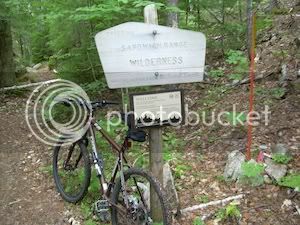As an avid hiker and mt biker I get frustrated that I cannot ride in wilderness areas. It came to a surprise to me that bikes were not banned in the original Wilderness Act in '64 but was added to it in '84. In fact back in '94 I saw a ranger riding his bike w/ trailer going up to 13 Falls, a decade after the ban.
I am not saying that all areas or trails should be opened to bikes, just like not all trails should be open to horses/pack animals. However I do believe that some areas/trails should be opened to riders. Just like national parks, maybe it should be left to the land managers for each area instead of a blanket policy for the country.
Two related articles.
http://www.americantrails.org/resources/fedland/BikeWilderness.html
http://www.newwest.net/topic/articl...oups_should_re_think_mountain_biking/C41/L41/
I am not saying that all areas or trails should be opened to bikes, just like not all trails should be open to horses/pack animals. However I do believe that some areas/trails should be opened to riders. Just like national parks, maybe it should be left to the land managers for each area instead of a blanket policy for the country.
Two related articles.
http://www.americantrails.org/resources/fedland/BikeWilderness.html
http://www.newwest.net/topic/articl...oups_should_re_think_mountain_biking/C41/L41/

